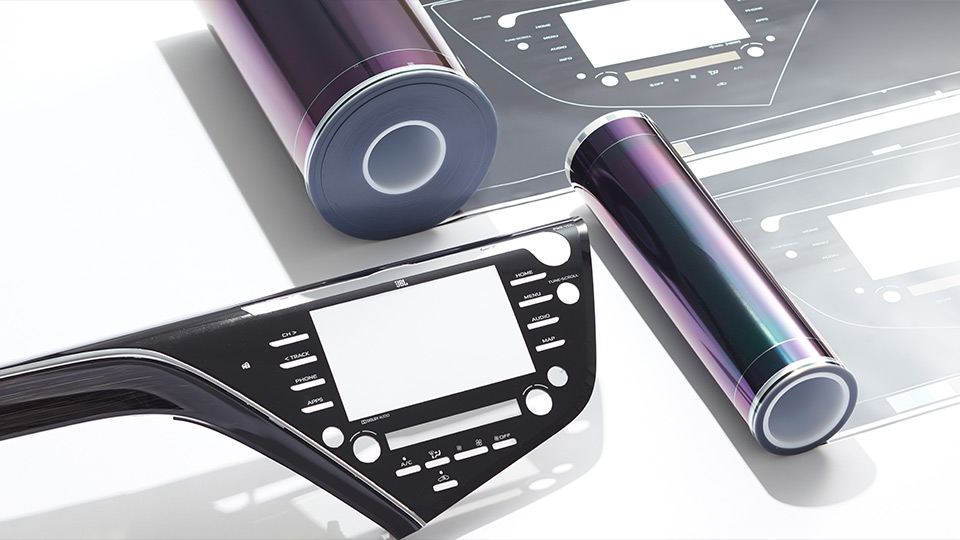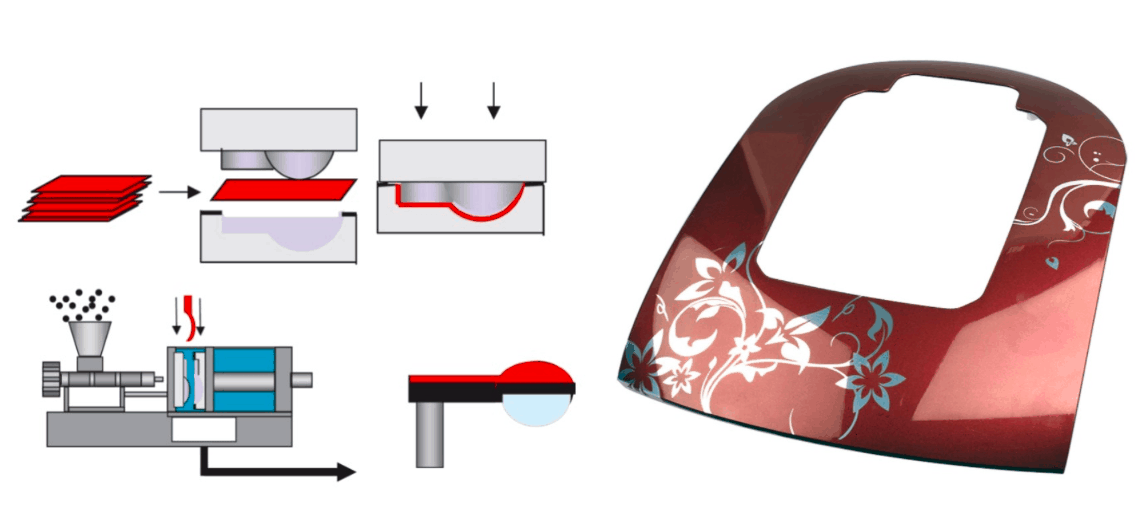In-Mold Decorations: Elevating Products With Precision and Aesthetics
In the realm of product layout, the marital relationship of precision and appearance holds a critical setting in capturing consumer interest and commitment. In-Mold Decorations (IMD) have arised as an advanced technique that not just boosts the visual appeal of products yet additionally makes sure a thorough assimilation of design elements. The fusion of modern technology and artistry in IMD opens up a realm of possibilities for suppliers seeking to differentiate their offerings in an open market landscape (In-Mold Decorations). As we explore the world of IMD, a globe where accuracy fulfills creative thinking, a deeper understanding of the transformative effect on products awaits.
Advantages of In-Mold Decorations
Using in-mold decors provides manufacturers an economical technique to seamlessly integrate detailed styles onto plastic surface areas throughout the production procedure. This cutting-edge strategy includes putting a pre-printed film or tag into the mold prior to injecting the molten plastic, causing a permanent blend of the decor with the item. The advantages of in-mold designs are manifold, beginning with the capacity to achieve high-resolution graphics and detailed designs that boost the aesthetic charm of the last product. This procedure gets rid of the requirement for secondary operations such as paint or post-decoration, enhancing the manufacturing process and minimizing production time and costs.
In addition to improving looks, in-mold designs also improve the toughness and long life of the layout as it ends up being an essential part of the item, rather than a surface layer that can diminish in time. Additionally, the smooth assimilation of designs via in-mold techniques guarantees a consistent and constant look across all made things, keeping brand uniformity and quality requirements. Overall, the benefits of in-mold designs make it a favored choice for producers seeking to elevate their products with precision and visual charm
Accuracy in Layout Integration
Accomplishing precise design combination with in-mold designs needs a keen concentrate on accuracy and interest to detail from the preliminary stages of the manufacturing process. The success of in-mold decors rests on the seamless assimilation of the design with the product, creating a unified and aesthetically appealing end outcome. Precision in style combination involves factors such as ensuring the precise placement of the decoration within the mold, choosing the best materials to attain the wanted aesthetic, and maintaining uniformity throughout the production process.
One trick aspect of accuracy in design combination is the alignment of the decor with the item's functions and shapes. Additionally, interest to information is important in preserving the top quality and uniformity of the decorations throughout multiple production runs, making certain that each product meets the highest criteria of accuracy and aesthetic appeal.
Aesthetic Appeals and Aesthetic Impact
With a concentrate on boosting the overall charm of items, the looks and aesthetic effect of in-mold decorations play a critical duty in captivating consumer focus. In today's competitive market, where customers look what i found are inundated with selections, the aesthetic appeal of a product can be the separating element that influences investing in decisions. In-mold decorations offer a special possibility to click this link boost the looks of items by providing complex styles, dynamic colors, and seamless coatings that typical decorating methods may struggle to achieve.
The visual influence of in-mold designs prolongs beyond mere visual appeals; it connects brand top quality, interest, and identification to information. By integrating aesthetically attractive components into product design, producers can develop a solid brand existence that resonates with consumers on a subconscious level. In addition, the precision and consistency used by in-mold design techniques guarantee that every item fulfills the greatest criteria of visual charm, strengthening brand reliability and client trust.
Cost-Effectiveness of IMD

IMD lowers the requirement for second operations like paint or labeling, conserving both time and sources. By incorporating the decor directly right into the molding procedure, IMD eliminates the additional actions required for applying designs post-production. This streamlined procedure not only minimizes labor prices yet additionally decreases the risk of errors or defects that might emerge throughout additional decorating processes.
Moreover, IMD boosts the sturdiness of decorations by encapsulating them within the product, ensuring a longer-lasting and more immune coating - In-Mold Decorations. This resilience translates right into lowered maintenance and replacement expenses over the item's lifecycle, making IMD an affordable solution for attaining superior aesthetic appeals and visual charm in manufacturing
Longevity and Durability
Integrating in-mold designs not just guarantees cost-effectiveness in making processes but likewise significantly improves product toughness and durability. The procedure of in-mold design entails the application of graphics or decorative coatings throughout the molding procedure, producing a integrated and smooth layout that is protected within the item itself. This safety discover this info here layer given by in-mold decorations acts as a shield against damage, scratches, fading, and various other ecological aspects that might compromise the appearance and resilience of the product with time.
Products with in-mold decorations are recognized for their resistance to abrasion, chemicals, and UV exposure, making them excellent for applications that require lasting efficiency and looks. Unlike standard surface-applied decorations that can peel or fade with usage, in-mold decorations end up being an intrinsic part of the product, ensuring that the layout stays vibrant and undamaged throughout the item's lifespan. This longevity not just enhances the overall quality of the item however additionally minimizes the requirement for constant upkeep or replacements, inevitably offering long-lasting expense financial savings for customers and producers alike.
Final Thought

The benefits of in-mold decorations are manifold, beginning with the ability to accomplish high-resolution graphics and thorough designs that enhance the visual appeal of the last product.In enhancement to boosting aesthetics, in-mold decorations additionally enhance the toughness and long life of the design as it becomes an integral component of the item, instead than a shallow layer that can use off over time. In-mold decors supply a distinct possibility to raise the visual appeals of items by providing elaborate designs, dynamic colors, and seamless surfaces that traditional designing methods might battle to achieve.
The procedure of in-mold decoration includes the application of graphics or ornamental coatings throughout the molding process, producing a smooth and integrated style that is protected within the product itself. Unlike conventional surface-applied designs that can peel off or fade with usage, in-mold decors come to be an intrinsic part of the product, ensuring that the layout stays intact and vibrant throughout the item's lifespan.